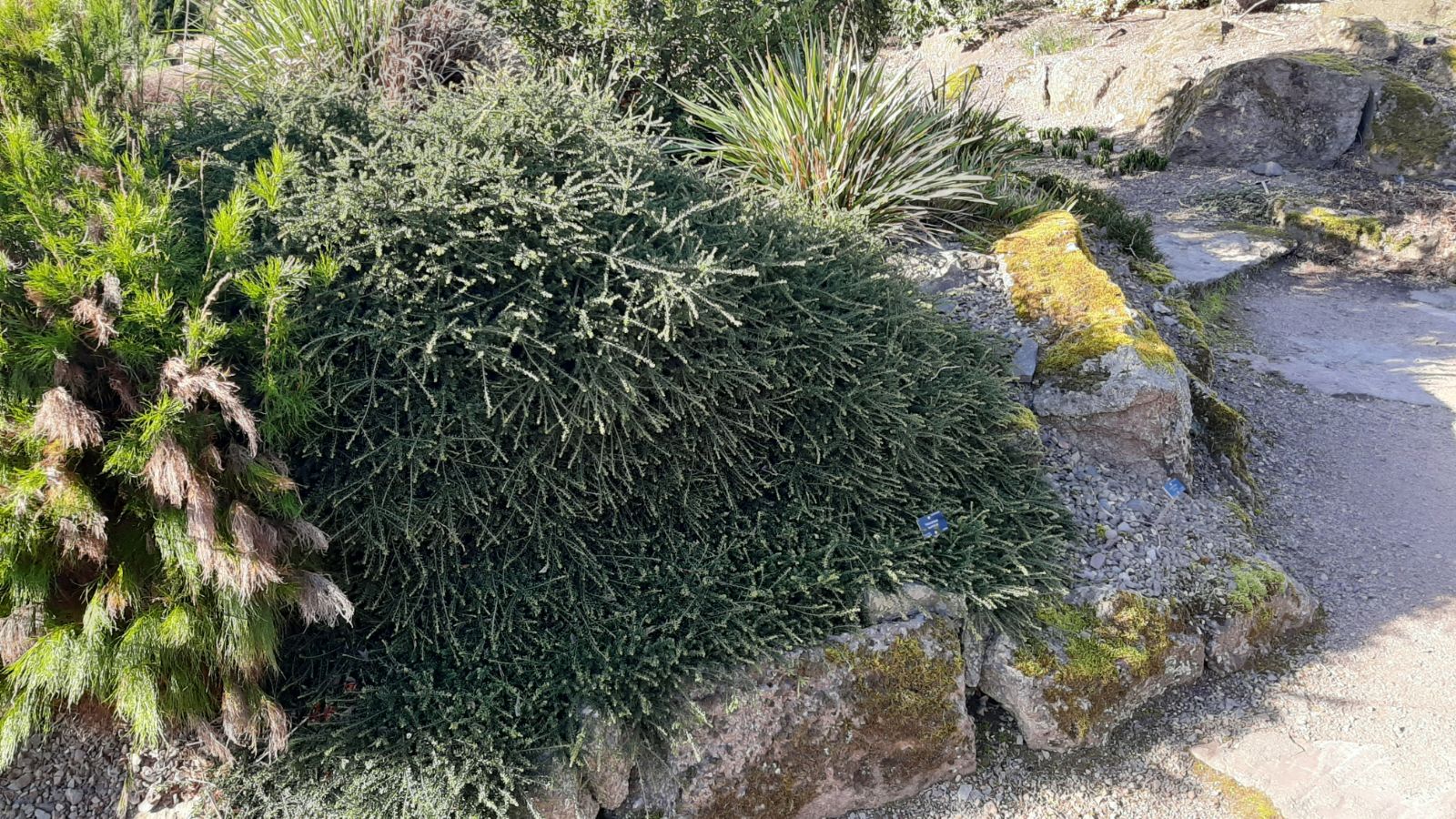Podocarpus lawrencei
Sponsor
Kindly sponsored by
The British Conifer Society in memory of Derek Spicer VMM, founder member.
Credits
Tom Christian (2023)
Recommended citation
Christian, T. (2023), 'Podocarpus lawrencei' from the website Trees and Shrubs Online (treesandshrubsonline.
Infraspecifics
Other taxa in genus
- Podocarpus acutifolius
- Podocarpus acutifolius × lawrencei
- Podocarpus acutifolius × nivalis
- Podocarpus acutifolius × totara
- Podocarpus brassii
- Podocarpus costalis
- Podocarpus drouynianus
- Podocarpus elatus
- Podocarpus elongatus
- Podocarpus guatemalensis
- Podocarpus henkelii
- Podocarpus laetus
- Podocarpus laetus × nivalis
- Podocarpus lambertii
- Podocarpus latifolius
- Podocarpus lawrencei × nivalis
- Podocarpus macrophyllus
- Podocarpus matudae
- Podocarpus milanjianus
- Podocarpus nakaii
- Podocarpus neriifolius
- Podocarpus nivalis
- Podocarpus nubigenus
- Podocarpus oleifolius
- Podocarpus parlatorei
- Podocarpus pilgeri
- Podocarpus pseudobracteatus
- Podocarpus salignus
- Podocarpus spinulosus
- Podocarpus totara
Shrub to c. 4 m (rarely to 13(–20) m) but more often procumbent or forming a low, wide-spreading mound to 5 m across. Bark detaching in small plates at first, devloping fibrous ridges with age. Branches numerous, densely set; terminal branchlets often long, whip-like, terminating in globose buds c. 2 mm across. Leaves sessile, spirally arranged, mostly curved away from the shoot, linear-oblong (the shortest leaves more or less oval), 4–16 × 4–5 mm, midrib indistinct above, prominent but obtuse below; mid- to dark green above, paler below with two grey-green stomatal bands; base gradually tapering, slightly twisted, decurrent; apex acute, pungent. Pollen cones solitary or in clusters of 2–3(–6), sessile or short-pedunculate, cylindrical, 4–7 × 2–2.5 mm at maturity. Seed cones solitary, sessile or short-pedunculate, receptacle 5–6 mm at maturity, subtended by a single ovoid seed, 4–5 × 2–3 mm. (Farjon 2017; Debreczy & Rácz 2011).
Distribution Australia New South Wales, Victoria, Tasmania
Habitat Sub-alpine and alpine habitats from 1100–2000 m asl, usually in rocky places and on screes or in open forests, and in wet sclerophyll forest in the Great Dividing Range.
USDA Hardiness Zone 7-8
RHS Hardiness Rating H6
Conservation status Least concern (LC)
The Australian subalpine Podocarpus lawrencei has been cultivated in the northern hemisphere for many years, but like many of the predominantly shrubby species details of its introduction are scant. The late British nurseryman Graham Hutchins (1996) believed that until 1984 only two female clones were grown in UK gardens, but this is almost certainly false. The late Chris Page introduced wild collected seed from Tasmania in 1976 (Page 10415) which certainly yielded multiple plants, several of which persist at Benmore and Edinburgh at least (Royal Botanic Garden Edinburgh 2022).
Bean discussed this species under its old name P. alpinus, observing that even in the early 20th century it was ‘quite hardy at Kew, where it has withstood 30° of frost without injury. It is a distinct shrub, and although quite healthy only attained [1.5 m] in height in fifty years or perhaps longer’ (Bean 1976). ‘Distinct’ may be overstating it. P. lawrencei and P. nivalis are easily confused in gardens in their vegetative state; they differ most obviously in cone details, with both the male and female cones of P. nivalis being slightly larger than those of P. lawrencei, although there is overlap. P. lawrencei tends to have leaves with a more gradually tapering, acute or even pungent apex, while the apex tends to narrow abruptly in P. nivalis, which also tends to have marginally larger, stiffer leaves, but vegetative characters such as these are irritatingly variable. P. lawrencei, at least as seen in northern gardens, is much more obviously distinct from P. acutifolius, although the noted American conifer taxonomist David de Laubenfels curiously considered these two species conspecific (de Laubenfels 1985), a view that has been almost unanimously rejected by others since.
P. lawrencei is one of only three conifers found both on mainland Australia and on Tasmania; the others are Callitris oblonga and C. rhomboidea (Debreczy & Rácz 2011). Although exclusively seen in our area as a low shrub, occasionally on a very short trunk, ideally suited to large rock gardens and such, individuals to 20 m have been recorded from the Errinundra Plateau in Victoria (Debreczy & Rácz 2011).
'Alpine Lass'
A female clone with very small leaves (6–8 × 2 mm) and of very slow growth (to 30–40 cm tall and broad in ten years). Named in 1991 by Graham Hutchins, UK, from long-cultivated stock (Auders & Spicer 2012).
'Blue Gem'
Suited to use as a groundcover plant, ‘Blue Gem’ can grow to 0.6 m tall × 1 m across in ten years. The young foliage tips are cream with a purple tinge, maturing blue-green (Auders & Spicer 2012). According to British nurseryman Graham Hutchins this was one of the two female clones long cultivated in Britain (the other being ‘Alpine Lass’, both names assigned by Hutchins) (Hutchins 1996) but Auders & Spicer (2012) suggest it was raised in Tasmania prior to 1983, while Hatch (2018–2020) attributes its introduction to the Lincluden Nurseries of Surrey, UK.
'Purple King'
This cultivar takes its name from the purple flush of its young extension growth, which later matures grey-green but turns purplish-green again through the winter months. A strong grower to 1.2 m tall × 2 m across in ten years. Cultivated and probably named in New Zealand prior to 1990 (Auders & Spicer 2012).
'Really Blue'
At least in terms of its blue foliage colour this is a significant improvement on ‘Blue Gem’, raised in the USA prior to 2005. ‘Really Blue’ is a low, spreading plant with long extension growths and a good metallic blue colour. In ten years it can achieve 0.3–0.5 × 1.5 m (Auders & Spicer 2012).
'Red Tip'
A small, rounded shrub with typical adult foliage, green with a grey or bluish hue, but with young extension growth red. Raised at Boskoop, the Netherlands, prior to 2000 (Auders & Spicer 2012).














